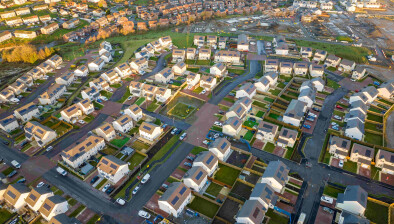Ash Sheikh: Home is the new office
Ash Sheikh, sales and marketing director of Muir Homes, describes how developers are factoring in the needs of home workers into the designs of new homes.

Ash Sheikh
Homeworking or a combination of work split between home and office is here to stay. All the evidence points to the hybrid work pattern remaining, and indeed growing for the foreseeable future. Home is indeed the new office.
For desk-based occupations, working from home during several lockdowns has allowed workers to reassess what’s important to them: living in a more rural or coastal location away from the city; a chance to relocate to be closer to family, or simply more space inside and outside the home. And for many professionals, a higher degree of flexibility is a major consideration in accepting a job offer or remaining where they are.
In March 2022, research by the Kantar consultancy indicated that 86% of 18–24-year-olds wanted to spend an average of 56% of their working week at home, while 86% of 25–39-year-olds wanted to work from home 60% of the week.
These patterns and trends are being borne out in the private housing sector. At Muir Homes, where we offer the full range of properties, demand for flats with no garden or balcony has dropped off, and we are now seeing a steady increase from younger buyers for larger detached and semi-detached properties in semi-rural areas.
Roughly 60% of purchasers of our larger homes (4+ bedrooms) intend working in the office two days per week; and of the last ten houses we handed over – The Blairs, in Aberdeen – four new owners intend to work solely from home.
There will always be the need for an occasional trip to the office or a visit to a client, good connections to road, rail and air transport networks are a fundamental ingredient to successful remote working. When Muir chooses new sites for development, this requirement for connectivity is always front of mind.
A spare bedroom being used as an office
Unlike in the US, where affluent remote workers are often cited as demanding something special to improve their home working environment– such as air filtration systems, the requirements of Scottish remote workers are rather more modest and predictable.
Spending more time working from home means that super-fast broadband is a must-have. Many buyers are pretty clued up on broadband speeds available in the area when they come to view a property. Soaring energy prices, environmental concerns and more time spent in the home, means interest in energy efficiency ratings has never been higher our new homes.
People working at home often hot-desk around the house – we offer multiple power outlets. additional ethernet cable and fix points for optimum flexibility throughout the home to help owners get online from day one.
Space, and how to make the best use of it is nearly as important as broadband speeds. We often have buyers asking for very specific dimensions with a view to seeing where best to site their desks or drawing boards.
We do not expressly designate any area as a home office, but in our show homes we aim to demonstrate the range of possibilities for successfully creating separate working spaces in open plan areas. This could be by using simple dividing mechanisms such as room dividers or bookcases.
Given that bedrooms are often used as home offices (Zoopla estimates 5m bedrooms in the UK have been turned into home offices), it is not a total leap of imagination for us to dress a third or fourth bedroom, to illustrate a home office arrangement.
We need to design houses that provide a practical space for work without losing the comfort and sense of sanctuary after a busy day in the office we call home.









